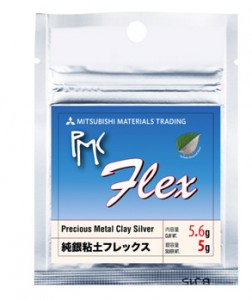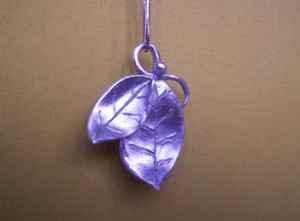by Jo Varney
PMC Flex is a relatively new addition to the popular metal clay range produced by Mitsubishi and boasts some extremely useful qualities which will be to the benefit of most people working with the material. Most notably, PMC Flex has a much longer working time than the original formula making it ideal for more complex pieces but also the perfect medium for the classroom. With an extended working window, beginners will find this a much more user friendly material to handle with ample opportunity to perfect mistakes.
Other attributes include: an increased flexibility, less stickiness and increased firmness to allow for the creation of more intricate details. The only possible drawbacks are the increased drying time (obviously if the clay has a longer working time it will require a much longer hardening period) and the shrinkage rate which is 15% so if you are using a 5.6g packet you will end up with a net weight of 5g once fired.
As soon as I started to use the new PMC formula it was instantly easier to handle due to being less sticky and slightly firmer in consistency. This makes such a difference when you are trying to mould tricky shapes. Following the instructions included in the pack I lightly coated my fingers and tools in olive oil which prevents the clay from sticking. I also armed myself with a small container of water and a paintbrush to create slip which helps to bond surfaces together and also smoothes any rough areas.
The clay will start to slowly dry as you work so it is best to re-wrap any excess to keep it fresh, but you can revive it by simply adding water which works well. You can also add water if your clay starts to crack after being worked for some time.
PMC Flex will not fully dry at room temperature due to its new formula so you will need to dry it out with a hairdryer or by heating in an oven or kiln at 150C for approx 20mins. This is a crucial step and you must ensure your pieces are fully dry before firing.
Once dry, you proceed as normal by kiln firing or torch firing to a soft orange glow for approx 3 mins. (Full instructions are included in the packet). Once cool your pieces can then be finished in whatever way you see fit, be it brush finishing, enamelling or simply sanding and polishing.
From my own limited experience with PMC I welcome the development of PMC Flex. On previous occasions when I have reviewed the original PMC, I found that it was not a material that a novice could pick up easily to get a good result. Despite the obvious potential I found it a frustrating and difficult material to work with, as it worked in a completely different way to my traditional jewellery training. Mitsubishi have clearly addressed many of these issues with PMC Flex which is now tailor made for the beginner – hooray!
By Jo Varney


Cooksongold


